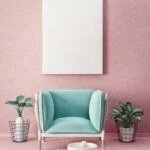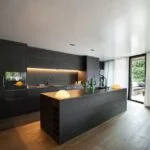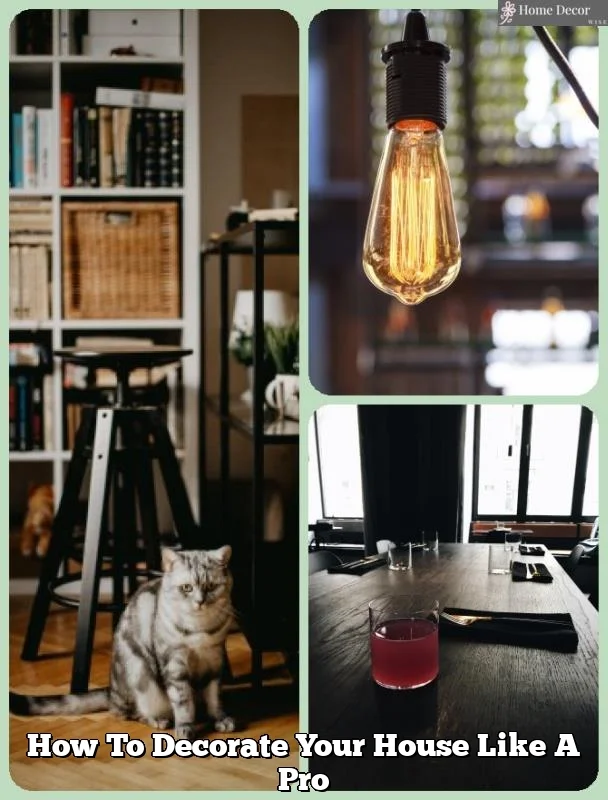The way we decorate our homes says a lot about who we are as individuals. It’s not just about filling a space with furniture and accessories; it’s about creating a beautiful living environment that reflects our unique personality and style.
Home decor is a form of self-expression, allowing us to curate spaces that bring us joy and comfort. In this blog post, we will explore the importance of home decor and provide valuable tips and ideas on how to create a beautiful living space that truly feels like home.
Creating a welcoming and aesthetically pleasing home is essential for our overall well-being. When we surround ourselves with elements that resonate with our personal style, we feel more comfortable, relaxed, and at peace. Our homes become sanctuaries where we can retreat from the outside world and recharge our energies. From the color scheme on the walls to the furniture arrangement, every detail contributes to setting the mood in our living spaces.
Understanding our personal style is crucial when it comes to choosing the right decor for our homes. It goes beyond following trends or replicating what we see in magazines; it’s about identifying what truly speaks to us.
By asking ourselves relevant questions and exploring different design aesthetics, we can uncover the type of decor that resonates with who we are at our core. With this knowledge in hand, we can then move forward in selecting colors, furniture, artwork, and other elements that reflect our unique preferences.
In the following sections, we will delve deeper into various aspects of home decor, such as choosing color palettes that set the desired ambiance, selecting furniture that maximizes comfort and functionality, incorporating proper lighting for an inviting atmosphere, adding wall decor to showcase personality, optimizing space for efficient organization, integrating nature for a serene environment, and adding personal touches through DIY projects and customization.
By implementing these ideas in your own home, you can transform your house into a personalized haven that perfectly encapsulates your style and brings you joy.
Assessing Your Personal Style
When it comes to decorating your home, understanding your personal style is essential. It sets the foundation for creating a space that truly reflects your personality and makes you feel comfortable and at ease. However, figuring out your personal style can sometimes be challenging. Here are a few questions to help you assess your preferences and determine the type of decor that resonates with you:
- What colors do you gravitate towards?
- Do you prefer modern, minimalist designs or are you drawn to more traditional or eclectic styles?
- What kind of atmosphere do you want to create in your home? Cozy and intimate? Bright and airy?
- Are there any specific themes or motifs that inspire you?
- What kind of materials do you prefer? Are you drawn to natural textures like wood and stone, or do sleek surfaces like glass and metal catch your eye?
By asking yourself these questions, you can start to get a clearer picture of your personal style. Additionally, here are some tips to help you determine what type of decor resonates with you:
- Take inspiration from different sources: Look through interior design magazines, browse online platforms such as Pinterest and Instagram, visit furniture stores and showrooms, and take note of what catches your eye.
- Create an inspiration board: Collect images of rooms, color schemes, furniture pieces, and other decorative elements that appeal to you. This will help visualize your preferences and identify patterns in your choices.
- Consider the functionality: Think about how you use each room in your home and how the decor can support those activities. For example, if you love hosting gatherings with friends and family, a spacious dining area with ample seating may be a priority.
- Trust your instincts: Ultimately, your personal style should make you feel happy and comfortable. Don’t be afraid to trust your instincts and follow your gut when it comes to selecting decor items that resonate with you.
Remember, your personal style is unique to you, and there is no right or wrong answer. It’s all about creating a space that reflects who you are and brings you joy. Understanding your preferences will serve as a guide throughout the home decorating process and help you build a cohesive and visually pleasing environment that truly feels like home.
Choosing a Color Palette
When it comes to home decor, choosing the right color palette is essential in setting the mood and creating a harmonious atmosphere. Colors have a powerful impact on our emotions and can greatly influence the overall feel of a space. In this section, we will discuss different color schemes and their psychological effects, providing guidance on how to select a harmonious color palette that suits the desired ambiance.
1. Warm and Cozy: Warm colors such as reds, oranges, and yellows can create a cozy and inviting atmosphere. They are known to stimulate conversation, making them perfect for spaces like living rooms or dining areas where socializing takes place. Consider incorporating shades of burnt orange or terracotta to add warmth to your home’s decor.
2. Calm and Tranquil: Cool colors like blues, greens, and purples have a calming effect on the mind and body. These hues are ideal for bedrooms or reading nooks where relaxation is key. Light pastel shades such as baby blue or lavender can create a serene environment perfect for unwinding after a long day.
3. Bold and Dramatic: If you’re looking to make a statement with your decor, bold and vibrant colors like emerald green, royal blue, or deep purple can add drama to any room. These hues are best used as accent colors or through furniture pieces to avoid overwhelming the space.
4. Natural and Earthy: Nature-inspired color palettes evoke feelings of tranquility and serenity. Think hues of greens, browns, and neutrals like beige or tan. Incorporating natural materials such as wood furniture or bamboo accents can further enhance this theme.
When selecting a color palette for your home decor, it’s important to consider not only your personal preferences but also the desired ambiance for each room. Remember to take into account natural lighting, the size of the space, and any existing furnishings or decor.
Experiment with different combinations and don’t be afraid to add pops of color through accessories or artwork. With the right color palette, you can create a visually appealing home that reflects your style and sets the mood you desire.
Furniture Selection
Finding the Right Size
When selecting furniture for your home, it’s important to consider the size of the space you are working with. Oversized furniture can make a room feel cramped and cluttered, while furniture that is too small may leave a room feeling empty and unfinished.
Measure your space carefully and take note of any architectural features or obstacles that may impact the placement of furniture. It’s also helpful to create a floor plan or use an online tool to visualize how different pieces will fit together in the room.
Choosing Materials for Comfort and Durability
Comfort should be a top priority when selecting furniture, especially for pieces intended for relaxation such as sofas and chairs. Consider the upholstery material – opt for soft and durable fabrics like linen or microfiber that are easy to clean. When choosing wooden furniture, look for pieces made from solid wood rather than veneers, as they tend to be more durable and long-lasting.
Multipurpose Furniture: Functionality at Its Finest
In smaller spaces or rooms with multiple functions, multipurpose furniture can be a game-changer. Look for pieces that serve dual purposes, such as ottomans with hidden storage compartments or coffee tables that can convert into dining surfaces. This allows you to maximize functionality without sacrificing style or space.
Consider Your Lifestyle
Finally, when selecting furniture, consider your lifestyle and needs. If you have children or pets, look for fabrics that are stain-resistant and easy to clean. If you frequently entertain guests, opt for seating options that allow for ample seating without overcrowding the space.
By considering size constraints, choosing comfortable materials, opting for multipurpose furniture, and taking your lifestyle into account when selecting furniture pieces, you can ensure that your choices not only contribute to the overall decor style but also provide comfort and functionality in your everyday living spaces. Remember, your furniture selections play a crucial role in creating a home that is both beautiful and practical.
Lighting and Ambience
Lighting plays a critical role in home decor as it has the power to completely transform the ambiance of a space. Proper lighting can create a warm and inviting atmosphere, highlight key architectural features, or even make a room appear larger. In this section, we will explore the significance of proper lighting and provide ideas on how to incorporate various lighting elements to enhance the overall atmosphere of each room.
The Importance of Proper Lighting
Proper lighting is not only essential for practical purposes such as reading or working, but it also sets the mood and creates an inviting ambiance. When choosing lighting for your home, consider the different activities that take place in each room and select lighting fixtures accordingly. For example, bright task lighting may be more suitable in areas where you need to concentrate or work, while soft and warm ambient lighting can create a cozy atmosphere in living areas.
Incorporating Various Lighting Elements
To create a well-lit space that meets both functional and aesthetic needs, it’s important to incorporate various lighting elements. Start by layering your lighting with three main types: ambient, task, and accent lighting. Ambient lighting provides overall illumination to the entire space, while task lighting focuses on specific activities such as reading or cooking. Accent lighting adds drama and highlights focal points or architectural details.
Consider using a combination of overhead lights, floor or table lamps, wall sconces, and even chandeliers to achieve your desired effect. Dimmer switches are also an excellent addition as they allow you to adjust the brightness according to different occasions or moods. Additionally, don’t forget about natural light. Utilize natural light sources by positioning furniture near windows or using sheer curtains that allow sunlight to filter through.
Creating Ambiance with Lighting
Beyond providing adequate illumination, different types of light fixtures can help create specific atmospheres within your home. Warm white bulbs emit a cozy and relaxing vibe, making them perfect for bedrooms or living rooms. On the other hand, cool white bulbs provide a more vibrant and energetic feel, which may be suitable for kitchen spaces or home offices.
In addition to choosing the right type of bulb, consider the direction and placement of your lighting fixtures. Upward-facing sconces can create an ambient glow on walls or ceilings, while downlights can draw attention to artwork or specific areas. Don’t be afraid to experiment with different combinations and styles to find what works best for each room in your home.
By understanding the significance of proper lighting and incorporating various lighting elements, you can enhance the overall ambiance of your space. Whether it’s creating a cozy reading nook, highlighting architectural features, or simply brightening up a room, strategic lighting choices can make a significant impact on your home decor.
Wall Decor and Art
The walls of your home provide the perfect opportunity to express your personality and add character to your living space. Wall decor and art play a crucial role in creating a visually pleasing environment that reflects your personal style. There are numerous options available when it comes to decorating your walls, including artwork, photographs, and do-it-yourself (DIY) projects.
One popular choice for wall decor is artwork. Whether you opt for original paintings or prints, artwork can instantly transform a blank wall into a captivating focal point. When selecting artwork for your home, consider pieces that resonate with you personally. It could be abstract art, landscapes, or even portraits. The key is to choose artwork that brings you joy and speaks to your sense of style.
In addition to artwork, photographs offer another way to showcase personal memories and experiences on your walls. You can create a gallery wall by arranging multiple frames of various sizes and shapes containing cherished photographs. This not only adds personality but also serves as a conversation starter when guests come over. Consider mixing family photos with travel snapshots or even displaying vintage photographs to give depth and visual interest.
If you are looking for a more creative approach, DIY projects can provide an opportunity to add unique touches to your walls while saving money. Try creating your own artwork using different mediums such as acrylics or watercolors. You can also experiment with DIY wall hangings made from fabric or other materials that complement the overall decor scheme of the room.
By carefully selecting the right mix of artwork, photographs, and DIY projects for your walls, you can infuse personality into your living space while creating an visually pleasing environment that is uniquely yours. Remember that the key is to choose pieces that truly speak to you and reflect your personal style.
Space Optimization
One of the challenges many homeowners face is maximizing the limited space in their homes. Whether you live in a small apartment or have a cozy house, it’s important to make the most of your square footage. By organizing and arranging furniture strategically, utilizing storage solutions, and effectively utilizing small spaces, you can optimize the available area in your home.
Firstly, when it comes to organizing and arranging furniture, it’s essential to consider both functionality and aesthetics. Start by decluttering and getting rid of any unnecessary items that take up precious space. Then, assess the layout of each room and determine the best placement for furniture pieces based on traffic flow and visual appeal. For example, consider using multifunctional furniture like ottomans with hidden storage or coffee tables with built-in shelves to maximize both seating and storage options.
In addition to furniture arrangement, maximizing storage solutions is crucial for space optimization. Look for ways to utilize underutilized spaces such as underneath beds or stairs. Invest in storage containers that can fit neatly into closets or under benches. Make use of vertical space by installing wall-mounted shelves or hanging organizers. By thinking creatively about storage options, you can keep your belongings organized while minimizing clutter.
| Tips for Space Optimization |
|---|
| Declutter regularly to eliminate unnecessary items |
| Consider multifunctional furniture with hidden storage |
| Utilize underutilized spaces such as under beds or stairs |
| Invest in storage containers that fit neatly into closets or under benches |
| Use vertical space by installing wall-mounted shelves or hanging organizers |
Lastly, effectively utilizing small spaces is key to optimizing your home’s square footage. When working with limited space, it’s important to think vertically. Look for opportunities to install shelves or cabinets that extend towards the ceiling. Choose furniture pieces that are proportionate and avoid oversized items that can make a small space feel cramped. Another tip is to use mirrors strategically to create an illusion of more space and reflect natural light.
Incorporating Nature
Bringing elements of nature into your home decor not only adds visual appeal but also creates a serene and relaxing atmosphere. By incorporating natural elements such as plants, flowers, and organic materials, you can transform your living space into a nature-inspired haven. There are several benefits to incorporating nature in your home decor.
Firstly, adding plants and flowers to your home brings a breath of fresh air and liveliness indoors. Plants not only help to clean the air by absorbing harmful pollutants but also add a sense of tranquility and beauty to any room. Whether you choose large leafy plants or small potted succulents, they can instantly brighten up the space and create a connection with the outdoors.
Secondly, using organic materials in your home decor can create a sustainable and eco-friendly environment. From wooden furniture to bamboo flooring or cotton textiles, incorporating natural materials not only adds warmth and texture but also reduces the use of harmful synthetic products. It is important to choose sustainable and ethically sourced materials that align with your values while creating an inviting ambiance.
Lastly, bringing nature indoors has been proven to have numerous health benefits. Studies have shown that exposure to natural elements can reduce stress levels, improve overall well-being, and increase productivity. Creating a connection with the earth through home decor can create a sense of calmness and balance in our daily lives.
| Room | Idea |
|---|---|
| Living Room | Create a focal point by placing a large potted plant in the corner or hanging plants in macrame planters. Use earth-toned textiles and natural materials for furniture and decor items. |
| Bedroom | Add a touch of nature to your bedroom with a bedside table adorned with fresh flowers or a small terrarium on your dresser. Opt for bedding and curtains made from organic materials such as cotton or linen. |
| Kitchen | Grow your own herbs in pots on the windowsill or create a vertical garden using wall-mounted planters. Incorporate natural textures through wooden cutting boards, woven baskets, and ceramic planters. |
Remember, nature-inspired home decor not only beautifies your living space but also contributes to your overall well-being. Get creative, experiment with different natural elements, and enjoy the calming effects of bringing the outdoors in.
Adding Personal Touches
Adding personal touches to your home decor is an excellent way to make your living space truly unique and reflective of your personality. DIY projects are a great opportunity to showcase your creativity and add a personalized touch to your decor. One idea is to create your own artwork or wall hangings that reflect your personal style and interests.
You can use various materials such as canvas, wood, or even repurpose items you already have at home. By creating your own artwork, you can not only save money but also have a one-of-a-kind piece that adds character and charm to any room.
Customizing furniture is another fantastic way to personalize your home decor. Whether it’s painting an old dresser with a bold color, reupholstering chairs with fun-patterned fabrics, or adding unique hardware to cabinets, customizing furniture allows you to create pieces that are tailored specifically to your taste and style. It is also an opportunity to rescue old furniture pieces that may have sentimental value or hold memories for you or your family.
Displaying sentimental items is yet another way to add personal touches to your home decor. Family heirlooms, travel souvenirs, photographs of loved ones, or meaningful mementos can all be showcased in various ways throughout your home.
For example, you can create a gallery wall featuring framed family photos or display cherished collectibles in a dedicated shelf or tabletop display. By incorporating these sentimental items into your decor, not only do you infuse the space with nostalgia and meaning but also make it a true reflection of who you are.
Conclusion
In conclusion, home decor is an essential aspect of creating a beautiful living space that reflects your personality and style. By assessing your personal preferences, choosing a harmonious color palette, selecting comfortable and functional furniture, incorporating proper lighting, adding personal touches with wall decor and art, optimizing space, bringing in elements of nature, and adding DIY customization, you can successfully transform your house into a home.
Implementing the tips and ideas discussed in this article can help you create a welcoming home that brings you joy. By understanding your personal style and selecting decor that resonates with you, you can create a space that feels authentically yours. Choosing the right color palette will set the mood and create the desired ambiance in each room. Thoughtfully selecting furniture that fits your overall style while also being comfortable and functional will maximize your enjoyment of the space.
Additionally, paying attention to lighting and ambiance will enhance the atmosphere of each room. Adding wall decor and personal touches will inject personality and character into your home. Optimizing storage solutions and utilizing small spaces effectively will make the most out of your square footage. Incorporating nature through plants, flowers, and organic materials will bring a soothing touch to your home environment.
Overall, by following these tips and implementing these ideas, you can transform your house into a warm and inviting sanctuary that truly feels like home. Remember that home decor is not just about aesthetics but also about creating a space where you can relax, recharge, and express yourself. So go ahead and embrace these tips to create a beautiful oasis that reflects your unique style and brings you endless joy.
Frequently Asked Questions
How do I start decorating my house?
When starting to decorate your house, it’s helpful to begin by brainstorming and establishing a clear vision of what you want to achieve. Take some time to gather inspiration from magazines, websites, or even by visiting model homes.
This will help you determine the overall style, color scheme, and theme you want for your space. Once you have a solid idea in mind, create a budget and make a list of the essential items you need to purchase or collect to bring your vision to life.
What order do you decorate your house?
The order in which you decorate your house can vary depending on personal preferences and individual circumstances. However, there are generally some recommended steps that can guide the process. Start by focusing on the larger areas and permanent fixtures such as walls, flooring, windows, and lighting fixtures.
Painting walls or installing wallpaper should typically be done before furniture placement as it avoids potentially damaging or dirtying new furniture pieces during these tasks. Next, move on to larger furniture pieces like couches or beds, followed by smaller furnishings such as tables, chairs, and storage solutions. Finally, add decorative elements like artwork, rugs, curtains/drapes, cushions/pillows, and other accessories.
What to do first when decorating a house?
Prioritizing what needs to be done first when decorating a house can help ensure a smooth and efficient process. Begin with any necessary repairs or renovations that may require professional assistance or specialized skills before diving into the actual decoration process itself. This could include fixing electrical issues, repairing damaged walls or floors, plumbing work if needed, or replacing outdated fixtures/appliances.
Once any maintenance tasks are completed, consider developing a floor plan that optimizes flow and functionality within each room. Clear out any clutter or unnecessary items from the space so that you have a clean canvas to work with before adding furniture or decorative elements according to your predetermined style and design choices.

I’m thrilled to be your companion on this exciting journey through the world of home decor and design. With a passion for turning houses into homes and a keen eye for the finer details, I’m here to help you transform your living spaces into beautiful, functional, and meaningful havens.





